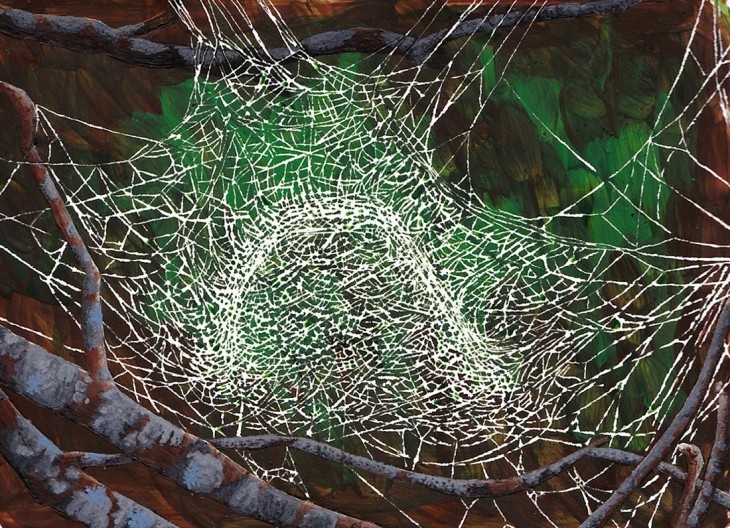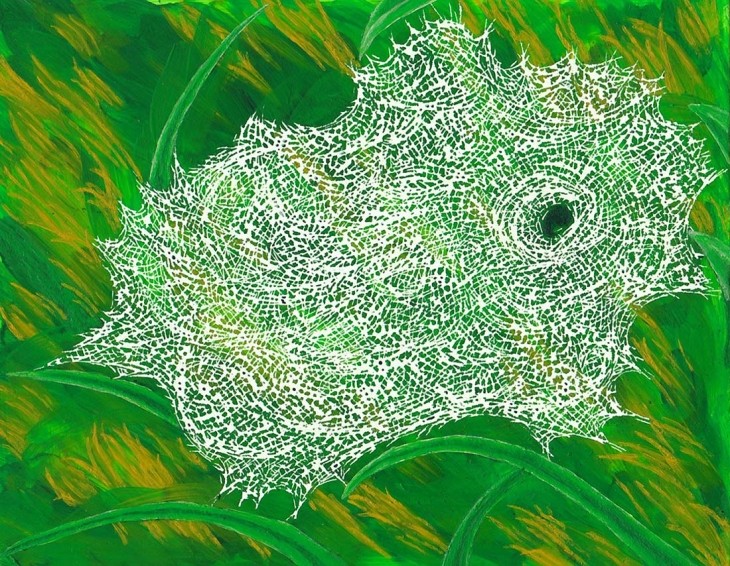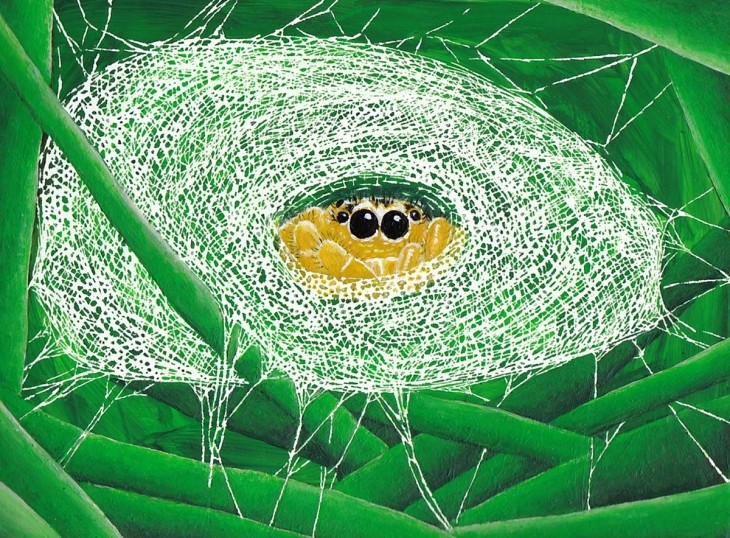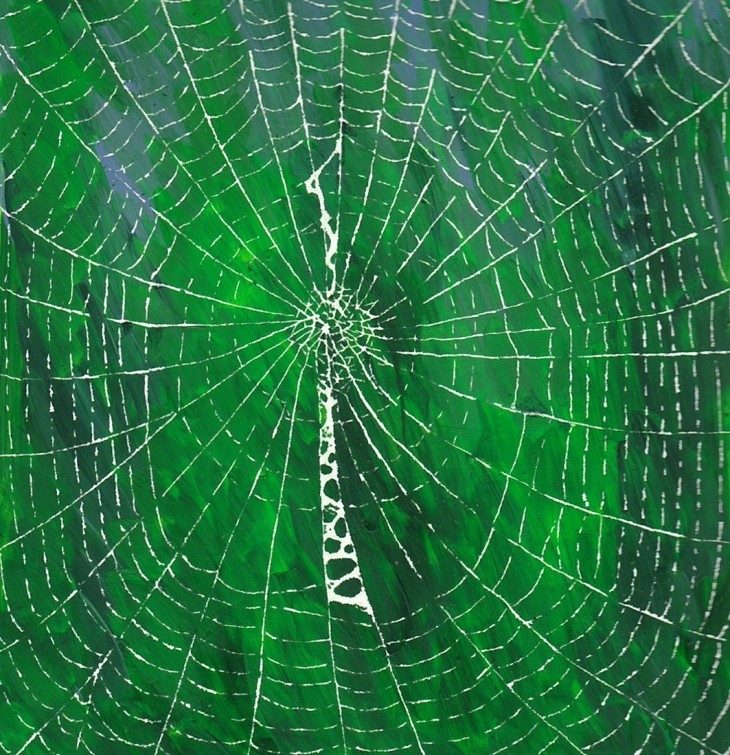
Bowl and doily web.
Illustrations by Rachel Sargent Mirus.
While orb webs – with their appealing spiral geometry – are the most familiar, spiderwebs take an amazing diversity of forms, each an ingenious fit for its maker’s hunting style and habitat. Here is a sampler of other common web types that you can encounter in the woods and meadows.
Sheet webs
Members of the dwarf spider family (Linyphiidae) make sheet webs. Most Linyphiidae species are tiny, approximately 1 to 4 millimeters long, and thus easy to miss. Their webs, however, are conspicuous and worth a close look for their exquisite three-dimensional geometry. The foundational shape of these webs includes a horizontal layer, or sheet, of tangled silk suspended by multiple crisscrossing threads. The spider waits beneath this structure for a flying insect to collide with the suspension threads and to fall onto the sheet. The spider then bites the insect through the sheet, capturing its dinner.
The bowl and doily web (made by Frontinella communis) is a special variant on the basic sheet web. This web has a main bowl-shape sheet, with a delicate second sheet below it, reminiscent of a tea setting for the finest of parties. The spider hangs between the two sheets, and the whole web is usually suspended from tall plants or low branches. Bowl and doily webs are common, and you may find many on a walk through a weedy meadow.
The filmy dome web (made by Neriene radiata) is another example of a curved sheet web, except that, as its name indicates, its shape is an inverted bowl. The spider hides beneath the apex of the dome. This web is typically found in shady locations, often on low vegetation, or sometimes among rocks.
Funnel webs
Spiders in the family Agelenidae make funnel webs. Webs of the common American grass spider (Agelenopsis pennsylvanica) are the most frequently found example from this group in the Northeast. These webs are relatively flat sheets built across grass, narrowing to an obvious funnel at one end where the spider waits. When an insect falls or steps on the sheet, it sends vibrations along the silk that alert the spider, which then rushes out to seize its prey. Funnel webs are easiest to spot in the morning when they collect dew and are particularly resplendent.
Retreats
Many spiders don’t make webs to catch prey, and instead actively hunt (such as wolf spiders) or wait in ambush (such as crab spiders). Jumping spiders (Salticidae) are active stalkers. Some can jump farther than 20 times their own body length. Many jumping spiders, such as this Thiodina sylvana, make silk retreats: small silk compartments woven inside rolled-up leaves or other nooks and used for protection when the spider isn’t out hunting.
Stabilimenta
Some orb-weaving spiders include features known as stabilimenta on their webs. The black-and-yellow garden spider (Argiope aurantia), for example, often adds distinctive zigzag strips of bright white silk running vertically from the center of its web.
Stabilimenta come in many shapes and sizes, varying from species to species, and even individual to individual. There are two types: the all-silk versions including the example here, or decorations that include debris, such as discarded prey husks.
Scientists once hypothesized that spiders used stabilimenta to stabilize webs (hence the name), but most aren’t structurally strong. Instead, web decorations may disguise spiders from their predators, attract prey to webs, prevent web damage by warning away birds, or have some other purpose entirely; scientists still don’t know.






Discussion *